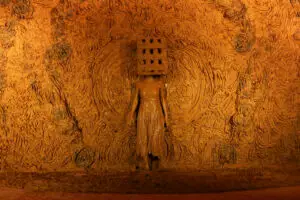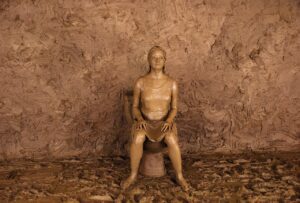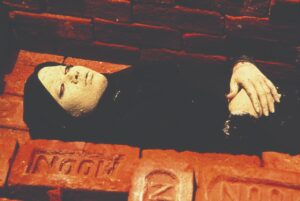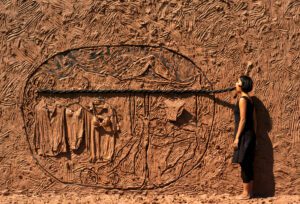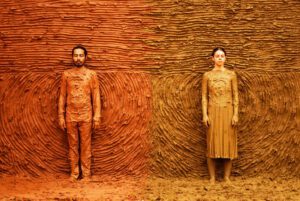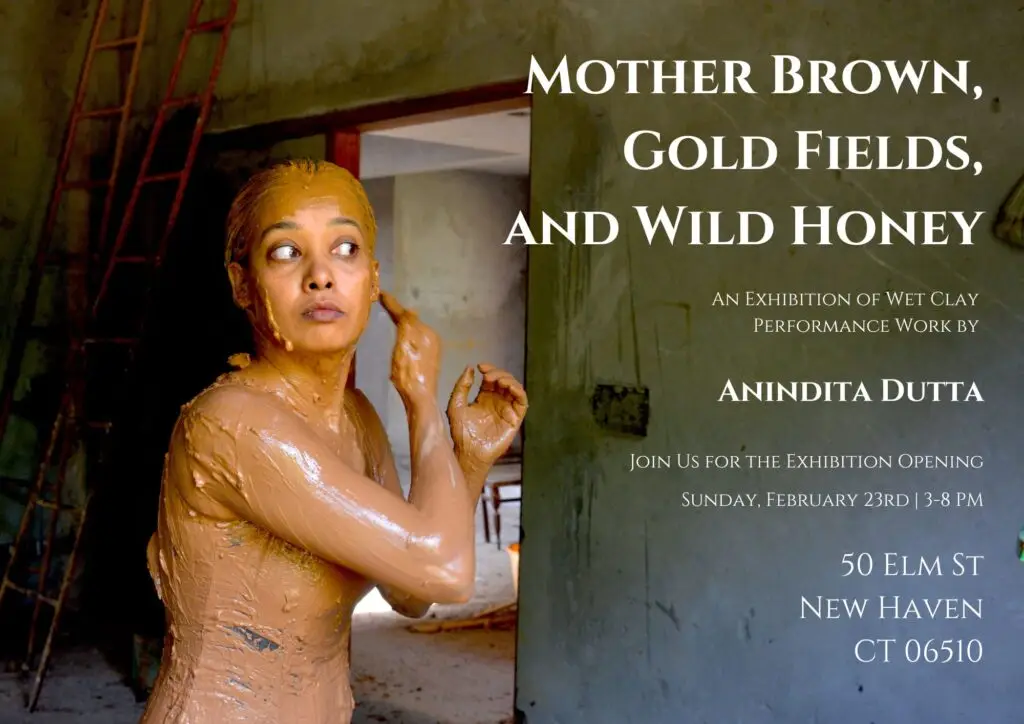
In Mother Brown, Gold Fields, and Wild Honey, Anindita Dutta reshapes clay into a raw, tactile language of earth, body, and memory. Her sculptures and performances are not passive objects but charged rituals—gestures that awaken wet clay into a medium of emotional and cultural power. Through her hands, clay becomes a reflection of life’s dualities: strength and fragility, nurture and power, joy and sorrow. Dutta does not resolve these tensions; she lets them breathe, creating forms alive with the urgency of human experience.
Clay, for Dutta, is both a witness and co-creator. It holds the echoes of ancient practices—stories told through generations—and speaks directly to the present. Her sculptures, shaped from raw, undyed clay, carry the natural pigments of the land itself. The Indian red of India, the yellows of China, the red ochre of Japan, the reds and oranges of Mexico, and the diverse clays of America: these clays, in their myriad hues, anchor her work in the global language of earth.
Dutta’s performances deepen this conversation between flesh and soil, body and earth. Staged in galleries, museums, and public spaces, these acts dissolve boundaries between humans and the earth. Bodies press into clay, leaving behind traces—these marks become a living record of endurance, resistance, and renewal. The clay pushes back, stiffening or crumbling, mirroring what Dutta calls its “stubborn kinship with bodies fighting to hold their shape.” Here, she asks:where does the self end and the world begin?
The exhibition’s title—Mother Brown, Gold Fields, Wild Honey—anchors this interplay of intimacy and universality. “Mother Brown” evokes the generative earth, a primal caretaker; “Gold Fields” speaks to histories of labor and wealth, brutal and luminous; “Wild Honey” hums with the untamed sweetness of nature. Together, they map Dutta’s journey from personal memory to shared myth. Her abstracted forms draw inspiration from the tactile rituals of rural India yet resonate with ancient global traditions where clay binds communities to land and lineage.
This exhibition invites you to witness clay’s silent alchemy. Dutta’s art does not describe change—it ignites it. In her hands, every groove becomes a story of survival, every dent a testament to defiance. Her work roars a quiet truth: like clay, we are marked by the pressures of living, yet within us burns the will to endure, to reshape, to rise.
